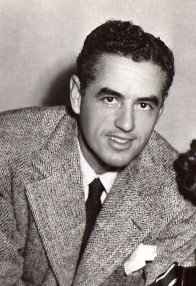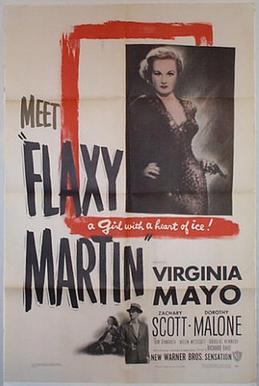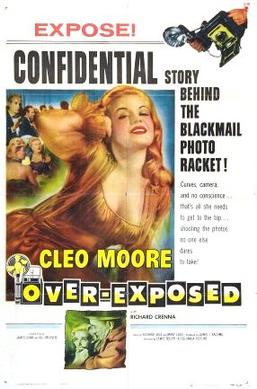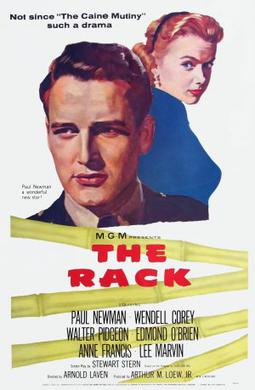
The Tall T is a 1957 American Western film directed by Budd Boetticher and starring Randolph Scott, Richard Boone, and Maureen O'Sullivan. Adapted by Burt Kennedy from the 1955 short story "The Captives" by Elmore Leonard, the film is about an independent former ranch foreman who is kidnapped along with an heiress, who is being held for ransom by three ruthless outlaws. In 2000, The Tall T was selected for the United States National Film Registry by the Library of Congress as being "culturally, historically, or aesthetically significant."

The Killers is a 1946 American film noir starring Burt Lancaster, Ava Gardner, Edmond O'Brien and Sam Levene. Based in part on the 1927 short story of the same name by Ernest Hemingway, it focuses on an insurance detective's investigation into the execution by two professional killers of a former boxer who was unresistant to his own murder. Directed by Robert Siodmak, it featured an uncredited John Huston and Richard Brooks co-writing the screenplay, which was credited to Anthony Veiller. As in many film noir, it is mostly told in flashback.

Lucien Ballard was an American cinematographer. He worked on more than 130 films during his 50-year career, collaborating multiple times with directors including Josef von Sternberg, John Brahm, Henry Hathaway, Budd Boetticher, Raoul Walsh, Sam Peckinpah and Tom Gries. He was nominated for an Academy Award for Best Cinematography for The Caretakers (1963).
Oscar Boetticher Jr., known as Budd Boetticher, was an American film director. He is best remembered for a series of low-budget Westerns he made in the late 1950s starring Randolph Scott.

Flaxy Martin is a 1949 film noir starring Zachary Scott and Virginia Mayo, and featuring Elisha Cook Jr., Dorothy Malone, and Douglas Kennedy. The crime thriller was directed by Richard L. Bare based on a story written by David Lang.

The Bird with the Crystal Plumage is a 1970 giallo film written and directed by Dario Argento, in his directorial debut. It stars Tony Musante as an American writer in Rome who witnesses a serial killer targeting young women, and tries to uncover the murderer's identity before he become their next victim. The cast also features Suzy Kendall, Enrico Maria Salerno, Eva Renzi, Umberto Raho and Mario Adorf.
Burton Raphael Kennedy was an American screenwriter and director known mainly for directing Westerns. Budd Boetticher called him "the best Western writer ever."

Psycho is an American horror franchise consisting of six films loosely based on the Psycho novels by Robert Bloch: Psycho, Psycho II, Psycho III, Bates Motel, Psycho IV: The Beginning, the 1998 remake of the original film, and additional merchandise spanning various media. The first film, Psycho, was directed by filmmaker Alfred Hitchcock. Subsequently, another film related to the series was made: an Alfred Hitchcock biopic, and two new novels, by Takekuni Kitayama and Chet Williamson, were released. Also, an independent documentary called The Psycho Legacy was released on October 19, 2010, mostly focusing on Psycho II, Psycho III and Psycho IV: The Beginning, while covering the impact and legacy of the original film.

Ride Lonesome is a 1959 American CinemaScope Western film directed by Budd Boetticher and starring Randolph Scott, Karen Steele, Pernell Roberts, Lee Van Cleef, and James Coburn in his film debut. This Eastmancolor film is one of Boetticher's so-called "Ranown cycle" of westerns, made with Randolph Scott, executive producer Harry Joe Brown and screenwriter Burt Kennedy, beginning with Seven Men from Now.

Psycho is a 1959 horror novel by American writer Robert Bloch. The novel tells the story of Norman Bates, a caretaker at an isolated motel who struggles under his domineering mother and becomes embroiled in a series of murders. The novel is considered Bloch's most enduring work and one of the most influential horror books of the 20th century.

Over-Exposed is a 1956 American film noir crime film directed by Lewis Seiler and starring Cleo Moore, Richard Crenna and Raymond Greenleaf. It was produced and distributed by Columbia Pictures.

Blood of Ghastly Horror is a 1971 horror film directed by Al Adamson and starring John Carradine, Tommy Kirk, Kent Taylor, and Regina Carrol.

Comanche Station is a 1960 American CinemaScope Western film directed by Budd Boetticher and starring Randolph Scott. The film was the last of Boetticher's late 1950s Ranown Cycle. It was filmed in the Eastern Sierra area of Central California near Lone Pine, California, not far from the foot of Mount Whitney. The towering granitic boulders known as the Alabama Hills served as the backdrop for the film's opening and closing scenes.

Decision at Sundown is a 1957 American Western film directed by Budd Boetticher and starring Randolph Scott. It is one of seven Boetticher/Scott western collaborations, including Seven Men from Now, The Tall T, Buchanan Rides Alone, Westbound, Ride Lonesome, and Comanche Station.

The Rack is a 1956 American propaganda film, based on a television play written by Rod Serling. It was directed by Arnold Laven and stars Paul Newman, Wendell Corey, Anne Francis, Lee Marvin and Walter Pidgeon.

Impulse is a 1954 British second feature film noir directed by Cy Endfield and starring Arthur Kennedy, Constance Smith and Joy Shelton.
One Mysterious Night is a 1944 crime film, the seventh in a Columbia Pictures series of fourteen starring Chester Morris as reformed crook Boston Blackie. It was preceded by The Chance of a Lifetime and followed by Boston Blackie Booked on Suspicion. Blackie is called upon to recover a stolen diamond.

The Magnificent Matador is a 1955 American drama film directed by Budd Boetticher and written by Budd Boetticher and Charles Lang. The film stars Maureen O'Hara, Anthony Quinn, Manuel Rojas, Richard Denning, Thomas Gomez, Lola Albright, William Ching and an early appearance of Stuart Whitman. The film was released on May 24, 1955, by 20th Century Fox.

Killer Shark is a 1950 American B film directed by Budd Boetticher and starring Roddy McDowall, Laurette Luez and Roland Winters. Charles Lang scripted the film and also appeared on it.

Tiger by the Tail is a 1954 thriller novel written by British author James Hadley Chase. There are several films based on this book.

















